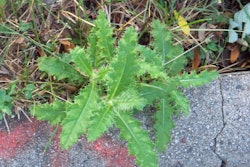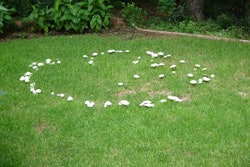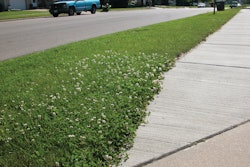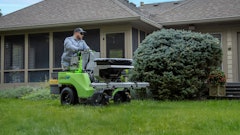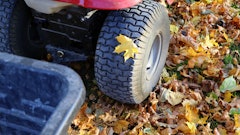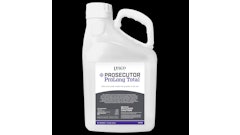
Yellow Foxtail is an annual summer grass that can be found across the United States, but predominantly in the West and Midwest. It can thrive in both moist and dry soil and can invade all types of areas in the yard including turfgrass, gardens and patches of dirt. Due to the rate of its germination and growth, it can become a problem in early planted grass areas. Yellow Foxtail grows in clumps and is shallow-rooted. Depending on weather conditions, it can bloom from June all the way until December.
Yellow Foxtail can be identified by its scraggily white hairs that grow in clusters near the base of the upper leaf surface. Flattened stems branch at the base, and the grass can reach up to 4-feet tall. The leaf blades are about 2 to 12 inches long, and have little hairs on the top and can have a slight spiral twist. Once the seedhead emerges, it forms a bristly cluster (almost resembling the bristles on the top of wheat stalks) that begin turning yellow to a golden color as they reach maturity.
Treatment and Prevention
The strongest prevention against Yellow Foxtail is thick, lush lawns. When turfgrass is healthy and has a lack of patches or bare spots, the weed is unable to seed because the turfgrass keeps the seeds in dormancy.
When seeding does happen, the seeds are able to germinate over the entire summer and into the beginning of the fall. One of the most effective treatments is by using pre-emergence herbicides in the spring. If they are applied at the correct time and rate, most brands offer prevention of Yellow Foxtail emerging. Although when the pre-emergence herbicides are applied too early in the season or at an incorrect rate—the pre-emergence herbicides significantly lose their effectiveness. The most effective types of pre-emergence herbicides are products containing Pendimathaline, Sulfentrazon or 2,4-D/triclopyr.
While using a pre-emergence herbicide is the most effective, when Yellow Foxtail has already appeared on a lawn or yard, there are post-emergence herbicides as well. Those that are the most effective contain clopropoxydin, sethoxydin and haloxfop-methyl.
As for natural or organic treatments, Yellow Foxtail can also be removed by hand. First the seed heads must be pulled off to prevent any from further spreading in the area. After, the roots must be removed by using a weeding tool. It is also been observed that vinegar can be directly applied to the weed, as the 5% solution of acetate acid, is effective in killing Yellow Foxtail and has little affect to full grown plants in the area around the weed.
Sources used:




